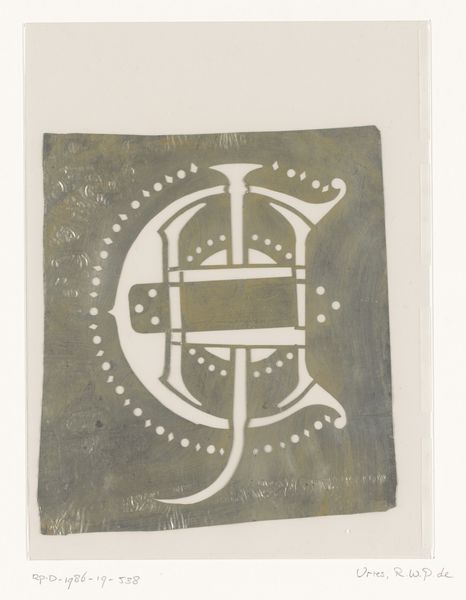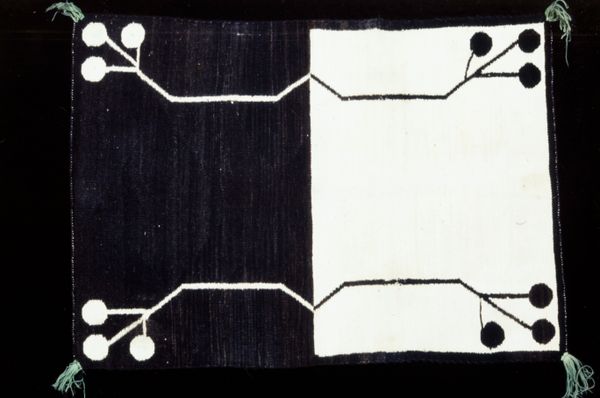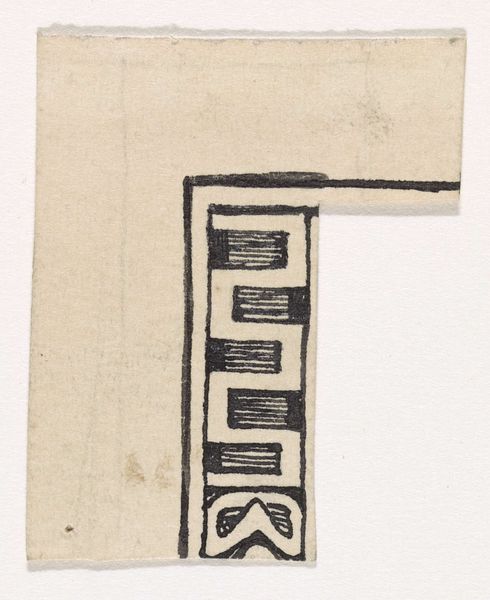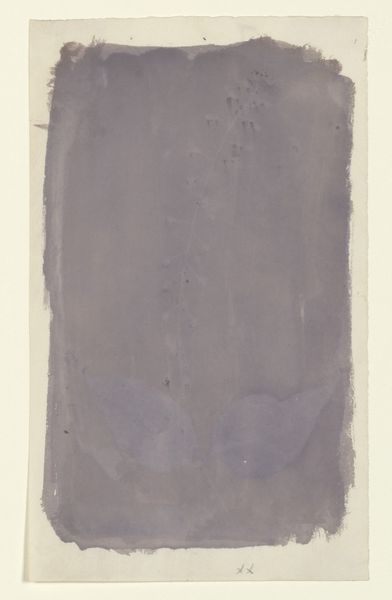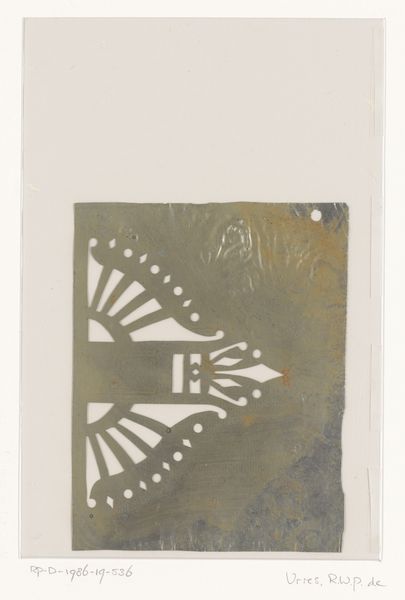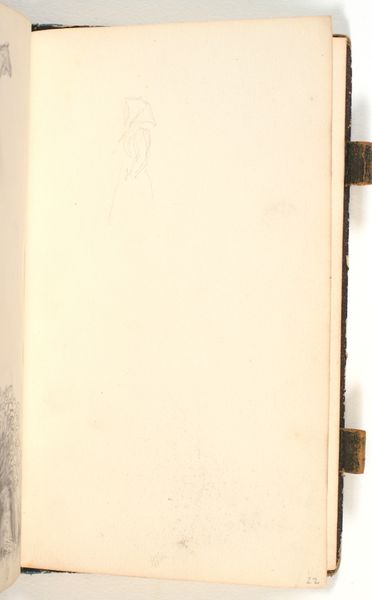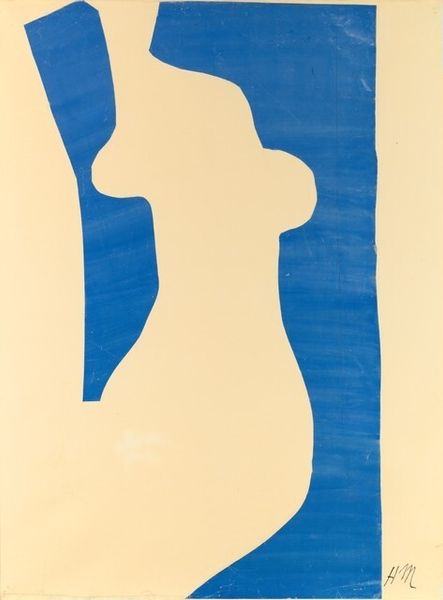
graphic-art, mixed-media, print, stencil
#
stencil art
#
graphic-art
#
mixed-media
#
stencil
# print
#
stencil
#
form
#
geometric
Dimensions: height 145 mm, width 63 mm
Copyright: Rijks Museum: Open Domain
Curator: Looking at this piece, the stark simplicity is immediately striking. It's listed as "Sjabloon met ornament," or "Stencil with Ornament," by Reinier Willem Petrus de Vries, created sometime between 1884 and 1952 using mixed media printmaking techniques. Editor: My first impression is of a strange glyph or some archaic tool rendered in graphic simplicity. It has the feel of something totemic, powerful. Curator: Absolutely. The composition centers around these geometric forms cut out in negative space. Considering the timeframe, this could easily have been a tool for mass production. How would its existence challenge the autonomy of artistic gestures? Editor: I'm drawn to the repetition of curved lines and that inverted triangle at the top; almost like a distorted fleur-de-lis or some corrupted symbol of nobility. Could the geometric shape symbolize, beyond its purely aesthetic qualities, an appeal for political revolution? Curator: Or a commentary on class? Perhaps even hinting at power structures? De Vries would have been living in an era of significant political upheaval. Thinking about the period between the late 19th century and the mid-20th century is critical; the development of photography, shifting class dynamics. Could this stencil represent resistance through easily disseminated art? Editor: It’s fascinating to imagine its usage in a time where symbol and image played pivotal roles in shaping identities. The stark contrast lends the stencil an almost haunting presence. You know, seeing the basic forms almost lends it an ageless, universal quality, reminiscent of ancient patterns. Curator: Thinking about stencils themselves, it challenges traditional notions of artistic ownership and skill. A fascinating comment when we understand the piece as both stencil and print; it’s an object that speaks to reproducibility and democratisation of form and aesthetic language. Editor: That perspective is powerful! Understanding its inherent capabilities expands our own reading, encouraging me to see the object as a facilitator, maybe a tool of societal and aesthetic shifts and cultural change. Curator: Exactly. By engaging with the historical context, we’ve unearthed some potent and pertinent themes surrounding art production and the politics of visual language. Editor: Indeed. It prompts a consideration for the continued influence and adaptation of past aesthetic and cultural frameworks in our present visual language.
Comments
No comments
Be the first to comment and join the conversation on the ultimate creative platform.
